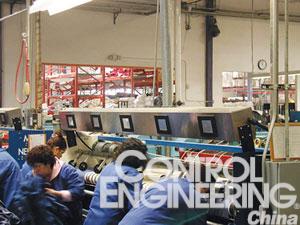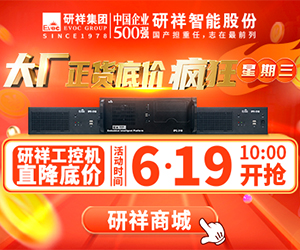The near ubiquitous spread of HMIs throughout industry is due to the fact that they help companies make better business decisions by delivering, managing, and presenting information—in real time—in a visually compelling and actionable format. Incorporating HMIs into applications has been proven to increase productivity, lower costsCONTROL ENGINEERING China版权所有, improve quality, and reduce material waste. HMIs help companies become more profitable by positioning them for change.
Bringing information everywhere
Three de
Improvements in HMI software;
Ability of HMIs to visualize data more competently and bring information together where it matters most; and
Increased and improved integration and connectivity technologies.
“Companies are demanding tools that improve their business process,” says Nelson控制工程网版权所有, “and HMIs help them do that by measuring the effectiveness of their processes and their machines. An HMI doesn’t just present data on a machine. It presents information in different forms to different people at different levels of an organization all the way up to the executive level. The QC manager evaluates statistics while an operator views machine performance. Plant floor data doesn’t stay at the plant floor level anymore, and the HMI is the key to moving that data.”

Increased capabilities at lower cost are encouraging manufacturers to place HMIs at more locations, and to move into applications they hadn't considered before. (Source: AutomationDirect)
Burgeoning use of HMIs is fueled by their transition from pure visualization tools to tools that help manage the manufacturing process. In the eyes of Bruce Fuller控制工程网版权所有, director of product management, control and visualization business for Rockwell Automation, “There has been a huge shift over the past decade in what people expec


 在线会议
在线会议 论坛
论坛 专题
专题 工控直播
工控直播 新闻中心
新闻中心 子站
子站 技术
技术 社区
社区



 IDEC HR8S系列新一代安全继电器有奖试用活动
IDEC HR8S系列新一代安全继电器有奖试用活动 2025(第二十一届)年度最佳产品奖有奖投票中
2025(第二十一届)年度最佳产品奖有奖投票中 AVEVA剑维软件食品饮料行业白皮书有奖下载
AVEVA剑维软件食品饮料行业白皮书有奖下载 立即有奖下载TE重载连接器选型指南
立即有奖下载TE重载连接器选型指南 2025(第十四届)全球自动化和制造主题峰会
2025(第十四届)全球自动化和制造主题峰会































